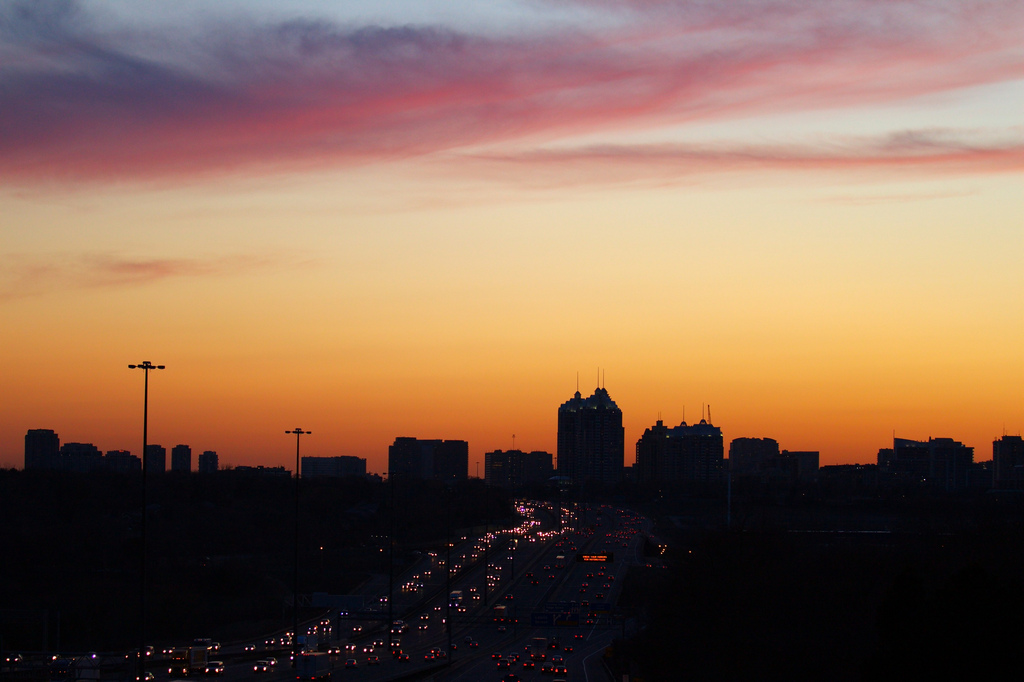
Leaside is a unique community just north of the Don Valley River, featuring mostly single-family homes with a mostly upper-middle class population. Classic-styled homes with brick facades and carefully planned curving roads hint at an interesting history of city-planning and architectural choices. Leaside is a gorgeous community with plenty of green space and parks, making it an excellent choice of home for those raising a family.
It’s also worth noting that this area will soon become more accessible than ever, with three Eglinton Crosstown LRT stops planned in the community.
The History of Leaside
Much like other communities in Toronto, Leaside started with a settler taking up the space and converting it for farming and other commercial purposes. John Lea Sr. came from Philadelphia to York, Upper Canada in 1819 and settled the area after purchasing it in 1820. John Lea Sr constructed a large, unique and octagonal brick house named Leaside which was completed in 1854. Eventually the iconic building became the cornerstone of a community, becoming a post office and town hall.
Eventually the land was purchased by a company called Canadian Northern Railway in 1913. They ended up demolishing the building, but the name stuck to the area. The owners of the Railway company hired a prestigious landscape architect to plan a community around the new railway and its maintenance yard. The community of Leaside shared its name with the new railway stop, and other new streets were named after Canadian Northern Railway executives, such as Laird Drive, Hanna Road, and Wicksteed Avenue.
Officials hoped to have their new community would be assimilated by either the nearby towns of Toronto and North Toronto for assistance with utilities and transit, but at this time, both towns declined. Leaside was officially incorporated as its own town on April 23, 1913, with a current population of 43.
By September of 1913, the lots went on sale in the new planned community. While the residential development did not initially take off due to the area’s isolated location, a number of industrial projects moved into the area. With World War I starting, Leaside became a hub of industrial activity producing munitions and other exclusive items.
In October 29, 1927, the Leaside Viaduct was completed, stretching over the Don Valley River and finally facilitating an easy mode of transport between Leaside and the southern townships.
Through World War II, Leaside continued to work as a hub for industrial war efforts. They produced munitions and hosted an airfield and multiple squadrons.
The population boomed, reaching 14,826 in 1949. One of the first shopping centres in Toronto opened up in the form of Sunnybrook Plaza, and the growth of the Thorncliffe area was so rapid that another bridge needed to be built across the Don Valley river.
In 1967, Leaside was finally amalgamated with the township of East York. With this came the eventual dissolution of the airfields and railway. The rest of the industrial sector continued to grow, and finally in 1998, East York officially became part of the City of Toronto.
Leaside Leisure
Leaside Memorial Community Gardens
This massive complex opened its door over 60 years ago and features a great many amenities, including an indoor swimming pool, two ice rinks, a curling rink, banquet room, and a large auditorium. The building poses itself as a community hub and certainly nails that role.
Serena Gundy Park
A nature park with bike trails, a waterfall, and picnic sites. Also listed as one of Toronto’s top locations for bird watching.
Sky Zone Toronto
Sky Zone is a very unique offering from Leaside: it’s the world’s first indoor trampoline park. They are a fairly new addition to the community, having opened in 2013, and offer the ability to jump with abandon on a veritable field of trampolines, as well as fitness classes, dodgeball, and more. This family entertainment centre focuses on physical activity and fun, letting you get a workout in while also flying high.
Evergreen Brick Works
This former quarry has turned a new leaf in its current use as a demonstration hub for new technologies, innovations, and practices for sustainable city living. The Evergreen Brick Works plays host to a large variety of events, from educational exhibits and workshops to farmer’s markets and entertaining performances.
Leaside Real Estate
Homes in the Leaside area are largely detached, with brick facades and gently peaked roofs. Georgian Revival and Tudor Revival homes speak to a history of classic sensibilities, alongside cape cod style simplicity and the odd boxy, modern construction. Leaside appears, at its heart, to be a simple community appealing to tradition and family living.
As the city and TTC stretches outwards, so too does the need for more compact housing. There are a number of condo developments that have been completed in the past couple of years to allow for cheaper residential living in the area.
For more information on Leaside, developments in the area, or if you’re looking to move to this wonderful community, please contact us and we’ll be happy to help!
Looking for the best of Leaside?
Parks
Schools
Please click here for a comprehensive list of schools in Leaside.
Restaurants
Mayrik: Simply prepared dishes of grilled meats & fresh vegetables served in a bright, stylish space.
McSorley's Wonderful Saloon & Grill: Festive hangout featuring over a dozen big-screen TVs, plus a wide draft selection & a pub grub.
Indian Street Food: Creative dishes inspired by India's street vendors, served tapas-style in a colourful setting.
Cafés
Pâtisserie La Cigogne: Cheery Alsatian bakery & cafe with a patio, serving all-day brunch plus French pastries & cakes.
.Rahier Patisserie: Warm patisserie featuring fruit tarts & other delicate French pastries, plus a petite patio.
Epi Breads: European-style bakeshop with indoor & outdoor seating offering baguettes, pastries & sandwiches.











